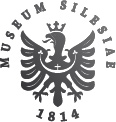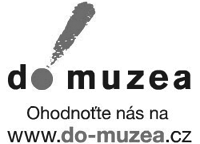Slezský sborník
rok 2014
ročník 112
číslo 2
Obsah / Contents
Studie / Articles (s. 165–250)
Janusz Spyra: U podstaw historiografii księstwa cieszyńskiego w XVI wieku: Zachariasz Starck (ok. 1535/40 – przed 1612 r.)
s. 165–177
Beginnings of Historiography of the Duchy of Cieszyn in the 16th century: Zachariáš Starck (around 1535/40 – before 1612)
The article is concerned with the work of a Saxon lawyer Zachary Starck, which is a collection of document regesta formerly stored in the castle archive in Cieszyn. Starck’s work was known by Silesian historians and archivists in the 19th century; however, it disappeared during the Second World War. Recently a copy of his work has been discovered again. The work was written at the beginning of 1580. It became the foundation of the future development of Cieszyn historiography.
Key Words: Cieszyn Silesia, Duchy of Cieszyn, regional history, court historiography, archive inventories
Zdeněk R. Nešpor: Slezsko v dějinách českého a moravského protestantismu 17.–18. století
s. 179–191
Silesia in the History of Bohemian and Moravian Protestantism in the 17th and 18th Centuries
Silesia was, apart from Hungary, the only part of the Hapsburg Empire in which Lutheran Protestantism was at least partially legally allowed in the Counter-Reformation era of the 17th and 18th centuries. The article examines whether and how Silesian Protestantism influenced both secret non-Catholics in Bohemia and Moravia and mutual religious ties between the regions using the results of recent archive research and evidence provided by existing literature. The author concludes that Silesia had for a long period of time only a limited impact on Bohemian and Moravian Protestantism with the sole exception of Teschen in the 18th century (and later). This was partly the result of the non-existence of the Pietistic movement in most Silesian Protestant congregations, while Pietism became an important element of the religiosity of secret non-Catholics in Bohemia and Moravia. However, their version of Pietism was not fully comparable with official church Pietism in the German lands; moreover, the impact of Teschen, which was prevailingly Pietistic only in the 1720s, cannot be limited solely to the expression of Pietism.
Key Words: Silesia – 17th and 18th centuries, Protestantism, Lutheranism, Counter-Reformation, Pietism
Veronika Čapská – Michaela Tvarůžková: Zajištění rodové kontinuity a dvě svatební kázání nad sestrami z Neffzern přednesená v Hradci nad Moravicí roku 1737
s. 193–218
Securing Family Continuity and Two Nuptial Sermons for the sisters of Neffzern delivered in Hradec nad Moravicí (Grätz) in 1737
The study analyzes two rare nuptial sermons published on the occasions of the weddings of two sisters, Anna Maria Magdalena of Neffzern with Johann Joseph Thomagnini and Maria Eufrosina Elisabeth of Neffzern with Rudolph Anton von Oberg in 1737. Until recently only one example of a nuptial sermon published in the Bohemian lands after 1620 has been known and paid scholarly attention. The article examines why the genre of a nuptial sermon, which was relatively marginal in Catholic areas, was employed for family representation in the case of Neffzern sisters. At first both sermons are characterized and contextualized. Subsequently they are analyzed from literary and cultural-historical perspectives.
Key Words: early modern Central Europe, Silesia, wedding sermons, nobility, family continuity
Ondřej Kolář: Spolek pro poctu padlých za Těšínsko
s. 219–230
Association for the Honour of the Fallen for Teschen Region
The study describes the circumstances of the establishment and activities of the association, which in the inter-war period preserved the memory of the Czech victims of the Czechoslovak-Polish conflict in the Teschen region. The association built a memorial at Orlová cemetery, published a memorial publication and made an attempt to shoot a film about the history of the Teschen conflict. From the end of the 1920’s, the association gradually stopped its activities because of insufficient funds and loss of social interest in the subject of their activities.
Key Words: Teschen region, Orlová, Teschen conflict, Czechoslovak-Polish relations, historical memory
Lubomír Hlavienka: Jaro a léto 1939 jako zdroj tradice a poslání pro slovenské ozbrojené síly
s. 231–250
Spring and Summer 1939 as a Source of Tradition and Mission for the Slovak Armed Forces
Within a relatively short period from March to September 1939, the newly established Slovak Republic had to try to defend its existence in the atmosphere of the disturbed Middle Europe. During this difficult period, the armed forces became one of the pillars on which the Republic built its tradition and which gave support in crises of its existence. This period brought three factors which contributed towards the formation of the Slovak army identity. They were the Small War with Hungary, nationalisation of the army and its purgation from the Czech minority and last but not least the support of German military campaign against Poland. Each of these episodes helped to strengthen the new regime in the country and gave the army its traditions on which it drew in the following years.
Key Words: Slovak Republic, The Second World War, Slovak army, the year 1939
MATERIÁLY / MATERIALS (s. 251–274)
Tomáš Velička: Nejstarší kopiář města Svídnice
s. 251–274
The Oldest Cartulary of Świdnica
The aim of the presented study is the analysis of the oldest cartulary of Świdnica from the 14th century. It is a written source, which the existing summaries have not considered sufficiently, even though it represents a significant evidence of the town office authority and activities in the Late Middle Ages. Furthermore, it also includes transcriptions of many documents that have not been studied yet. Within the study I proceed from palaeographic analysis to the content analysis and arrangement of the individual documents, the relation of the cartulary to the documents stored in the town archive and also the attention it was paid in the Late Middle Ages.
Key Words: cartulary, town office, Middle Ages diplomacy, town books, Świdnica
Diskuse / Discussion (s. 275–276)
Recenze / Reviews (s. 277–287)
Zprávy o literatuře / Brief Notices (s. 288–307)
Kronika / Chronicle (s. 308–317)
Bibliografická příloha / Bibliography (s. 318–319)
Poslední aktualizace článku: 06.10.2015
Vytisknout celý článek







